Continuing our specials reports into the service, maintenance and repair market WhoCanFixMyCar.com (WCFMC.com) looks at at how cars ‘age’ - what happens to service/repair bills as a car gets older?
A Ford Mondeo, for example, could mean anything from a £250 workhorse to a £25,000 brand new model. Clearly the latter wins out on performance, comfort, efficiency and safety. But what about reliability and maintenance bills?
More than 50,000 drivers have used WCFMC.com to find a quality, trusted local garage for their service or repair needs.
Alex Rose (pictured), WCFMC.com marketing director, provides the commentary.
1.Repair frequency

It’s a pattern familiar at WCFMC.com: estimated repair bills (in this case encompassing servicing and maintenance tasks, but not voluntary work, such as fitment of accessories, nor cosmetic repairs) and repair frequency are not entirely in-sync.
Repair bills rise to a peak at 9-10 years old, with a gradual decline thereafter, as older vehicles are often simpler, with lower parts/maintenance costs.
The pattern in repair frequency is far more pronounced, resembling a classic bell-curve. Why does repair frequency fall away so sharply? Simply, there are fewer older cars on the road, and those that remain cover fewer miles. Plus, their owners may be happy to live with certain faults that would otherwise be repaired.
2. Repair type:
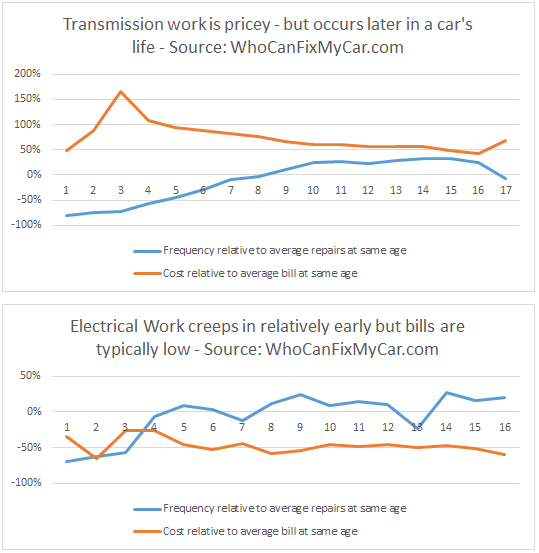
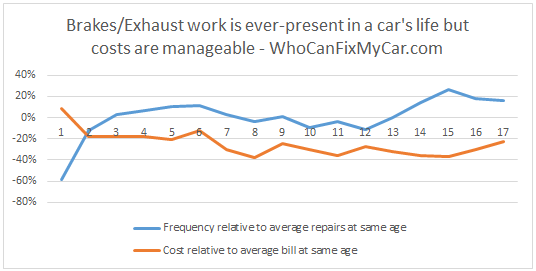
The above three examples show three radically different trends. While transmission work is pricey, the likelihood is that it will occur in the second half of a car’s life.
Electrical work begins to happen when a car is a little younger, but fortunately, costs are well below WCFMC.com's overall average estimates. As we’ll see, this varies dramatically by car.
Finally, brake and exhaust work is something of an ever-present in a car’s life but, fortunately, costs for replacing these readily-available ‘wear parts’ are reasonable.
But what happens when we put vehicle brands head-to-head?
3. Ageing (dis)gracefully?
We found that brands from the same country tend to perform relatively similarly, so we’ve grouped four big-selling car-producing countries: Japan, Germany, France and Italy, to see if the stereotypes of Japanese longevity, German solidity and the like hold true. Pay particular attention to the blue line – the relative likelihood of repairs by vehicle age.
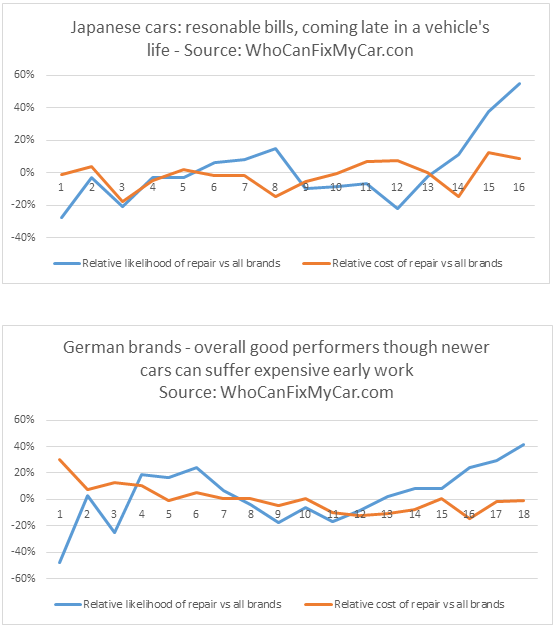
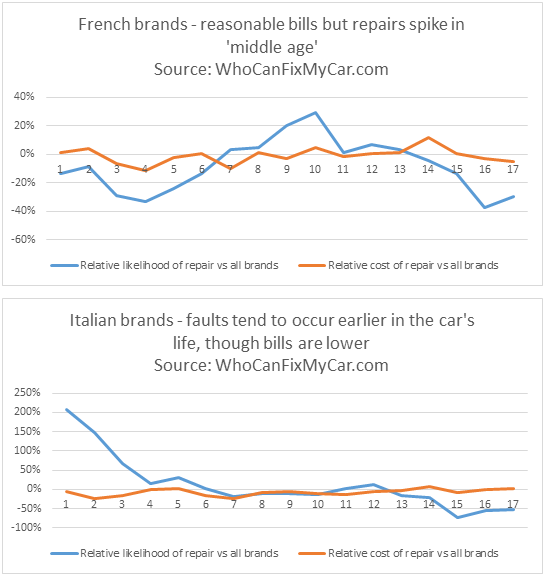 Comparing, for example, Japan and Italy, the output is clear: Italian cars are much more likely to require work in their early life.
Comparing, for example, Japan and Italy, the output is clear: Italian cars are much more likely to require work in their early life.
At three years old an Italian car is over twice as likely as its Japanese counterpart to visit one of our garages.
The spike in Japanese garage visits from year 13 onwards is simply a reflection of the fact that more Japanese cars remain on the road at that age, thus skewing the trend upwards.
French cars seem to suffer a ‘midlife crisis’, requiring regular attention at 8-11 years old though, in truth, bills tend to be below average. German cars seem to suffer at a younger age before going on to be more reliable as they get older.
Repair prices, however, are high, particularly early on. Finally we looked at one age-old stereotype – the likelihood of French cars to suffer electrical glitches.

It’s mixed news for Peugeot, Renault and Citroen. While the trend is plain to see, the good news is that it’s not apparent when the cars are under six-years-old. Perhaps newer models are finally putting this stereotype to bed.
Summary
Perhaps surprisingly, repair bills and frequency of garage visits seem to peak in 8-12 year old cars before reducing thereafter.
However, it’s important not to generalise: the pattern varies by vehicle brand and, even more so, by repair type.
A note on methodology: every month 4,500 drivers use WCFMC.com to find a great local garage.
As a result it has a nationwide, multi-brand, multi-repair type insight into vehicle reliability trends. In this instance it stripped out non-maintenance jobs, such as crash repairs, resprays and modifications, and focused purely on mechanical and electrical work. It also set a minimum- and maximum-quote threshold, in order to discount any obvious outliers. WCFMC.com runs its analyses using its own dataset. It does not claim that this is an exact representation of the UK vehicle parc.






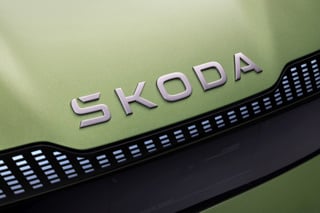














Terry Hogan - 14/11/2014 11:53
Nice bit of data Alex. The age split looks like it is pretty reflective of the UK car parc.